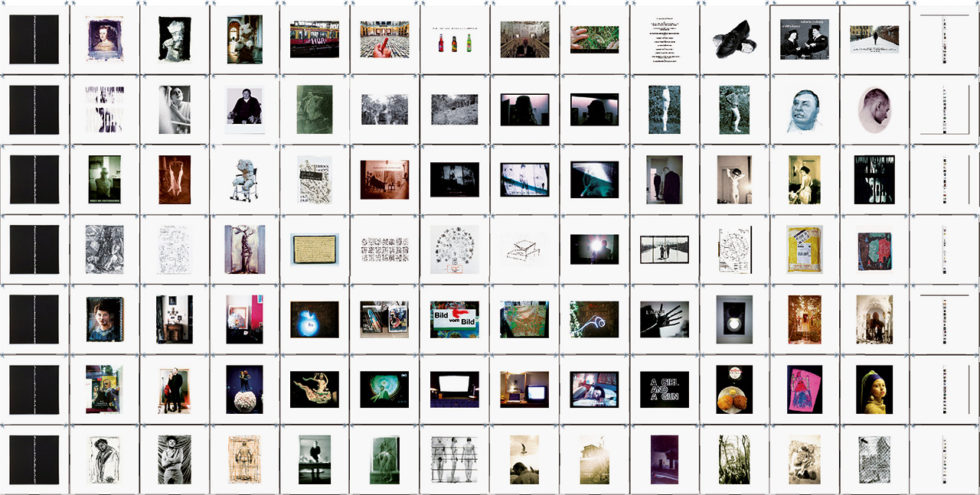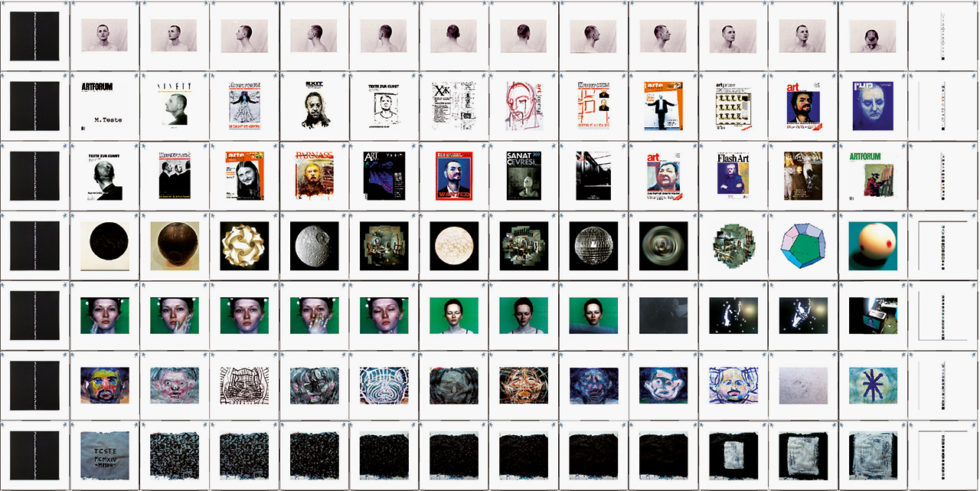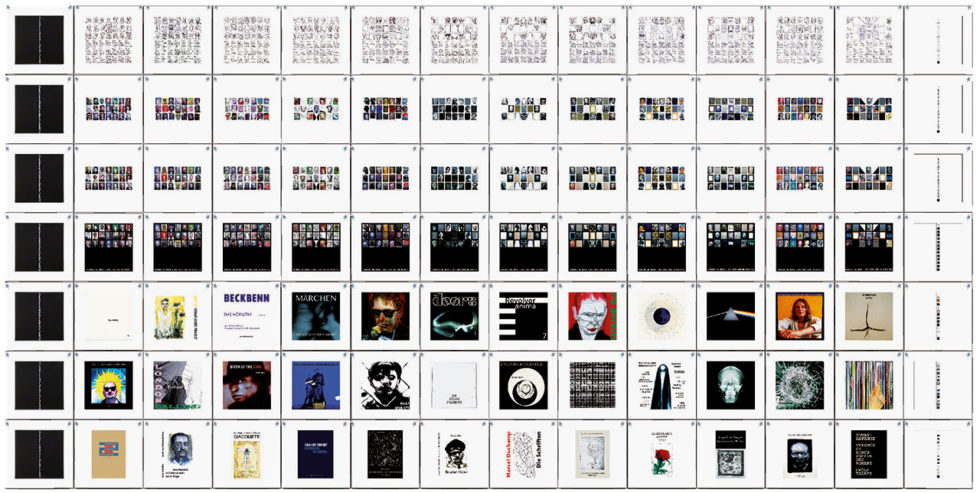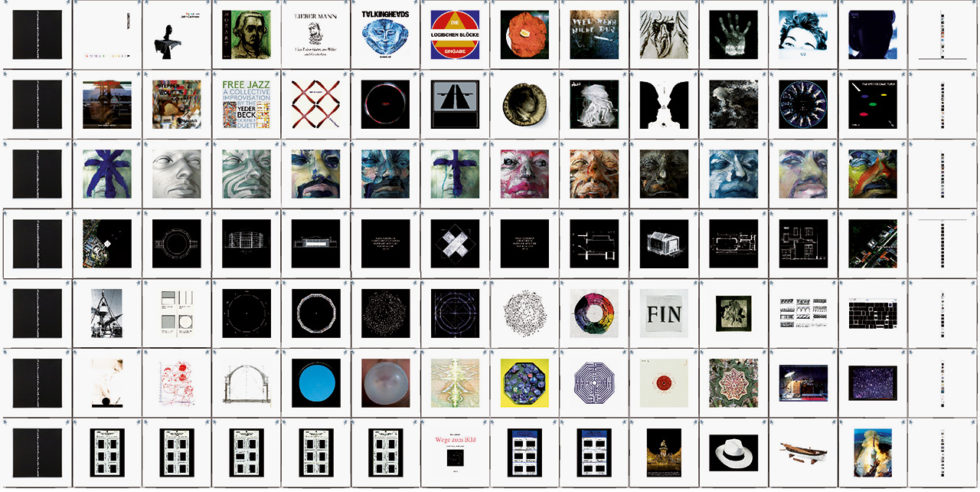
2014-15
#FGWGBBT0001-0007
Sequential Art, digital mixed media, 392 prints, each card 0.21 x 0.21 m, 4 parts in total 1.47 x 11.76 m.

2014-15
#FGWGBBT0007-0014
Sequential Art, digital mixed media, 392 prints, each card 0.21 x 0.21 m, 4 parts in total 1.47 x 11.76 m.

2014-15
#FGWGBBT0014-0021
Sequential Art, digital mixed media, 392 prints, each card 0.21 x 0.21 m, 4 parts in total 1.47 x 11.76 m.

2014-15
#FGWGBBT0021-0028
Sequential Art, digital mixed media, 392 prints, each card 0.21 x 0.21 m, 4 parts in total 1.47 x 11.76 m.
Without archive no citability. #FGWGBBT0001-0028 sees itself as a digital “opus geminum“ in verse or postcard form of the artist-researcher’s largely unordered multimedia studio archive. These postcard games are certain experiments in form and thought in order to study and store exemplary stylistic exercises and their modes of use. In the sense of Ludwig Wittgenstein’s “Sprachspiel-Begriff“, every linguistic utterance is domiciled in a human practice. In “Philosophical Investigations“ (1953), Wittgenstein expressed this in the formula: “I shall also call the whole, of language and of the activities with which it is interwoven, the ‘language-game.’“ (Wittgenstein, PU §7) Through the multiple narration and concatenation of pictorial art and subtitle, the project with its playful visual annotations and keywording could be described as an experimental postcard poem to organize the raw linguistic data material. The sequential examples of this “concept game“ illustrate the limits of hierarchical systematics and at the same time show an alternative with the approach of “family resemblances“: here, the structure of the sequence is based on the twelve-tone technique and the rhythmic melody of the sonnet, without, however, using only twelve different pitches of the chromatic scale to create 14 metrically structured postcards each. The 28 lines of the “symbol sequence“ #FGWGBBT0001-0028 are structured, on closer inspection, as follows: 1,2,4,1,2,4,4,2,1,4,2,1.
